Welcome to our blog on Weed Management in Corn Farming, where we’ll explore essential strategies to keep those pesky invaders at bay. Cultivating corn is difficult, but effective weed control is vital to maximize yields and ensure crop health. This comprehensive guide delves into the latest research and best practices for sustainable weed management. We’ve covered you, from identifying common weed species to employing herbicides and innovative cultivation techniques.
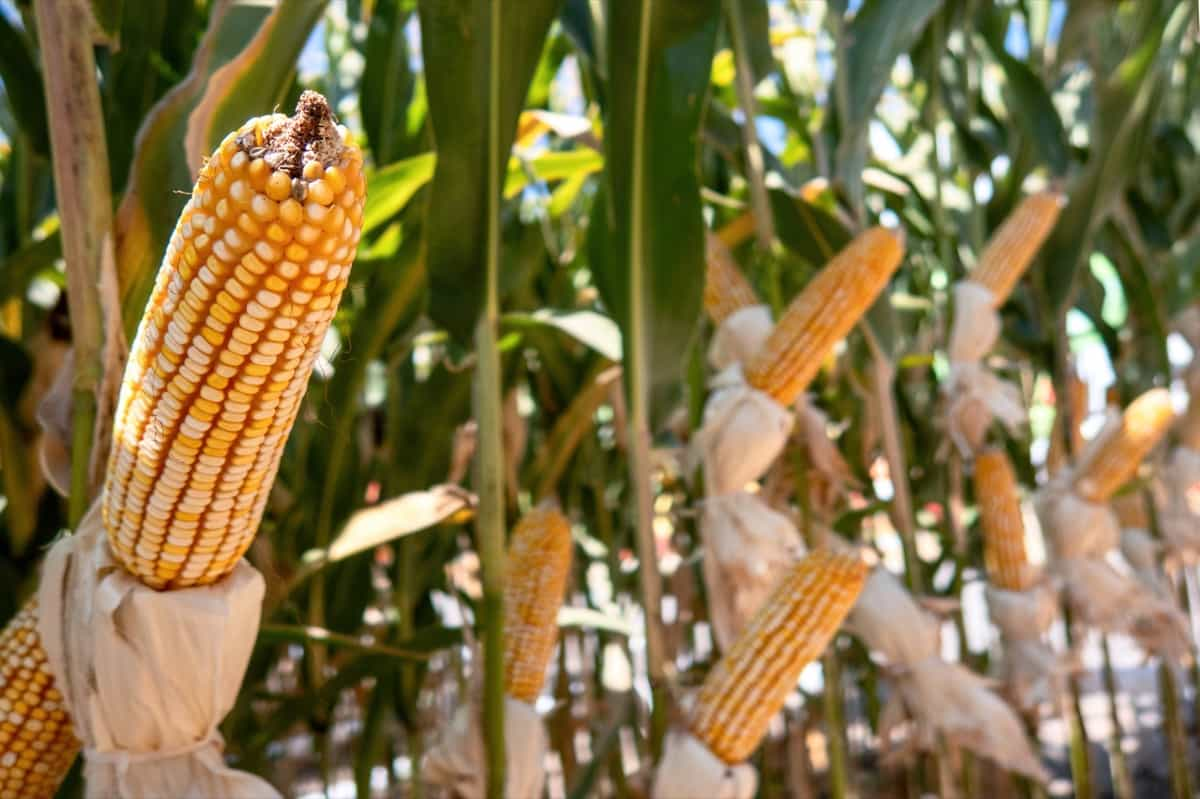
What is Weed Management in Corn Farming?
Weed management in corn, known as maize, controls undesirable plants competing with corn for essential resources like water, nutrients, and sunlight. Effective weed management is crucial to maximizing corn yields and overall crop health. Early control is vital as weeds can impact corn yields 3 to 5 weeks after emergence.
Integrated Weed Management (IWM) is a comprehensive approach that combines cultural, mechanical, and chemical methods for sustainable and effective weed control. Cultivating a competitive corn crop through proper seedbed preparation, irrigation, and timely cultivation is essential to suppress weeds and optimize corn productivity.
Understanding Weed Management in Corn
Corn producers in the Americas have widely adopted herbicide-resistant hybrids, especially glyphosate-resistant varieties. Although glyphosate provided excellent weed control for years, its overuse in corn-soybean cropping led to weed shifts and glyphosate-resistant biotypes—a clear example of overreliance on a single method.
To combat this, a well-planned weed management program should incorporate multiple strategies. Preventive techniques include monitoring, cultural control (e.g., crop rotation, adapted varieties), mechanical/physical control (tillage, mowing), and chemical control. Herbicides remain primary and economical, but wise management and rotation are crucial.
Integrated Weed Management in Corn Farming
In corn farming, weeds significantly threaten crop health and yield. To ensure optimal corn growth, controlling weeds during the early stages as they compete for essential resources like light, nutrients, and water. Late-season weed infestations may not affect yield as much, but they can harbor harmful insect pests, impacting corn quality. Weeds can also slow down harvesting and increase grain moisture content, making them a serious concern.
Integrated Weed Management (IWM) is the key to tackling this challenge effectively. IWM combines cultural, mechanical, and chemical methods tailored to specific growing conditions, preventing weed resistance and dominance. Cultural practices, like proper seedbed preparation and irrigation, create a competitive corn crop that naturally suppresses weeds. Transgenic corn varieties with herbicide tolerance offer additional control options.
In case you missed it: How to Start Corn/Maize Farming in Mexico: A Step-by-Step Production Guide
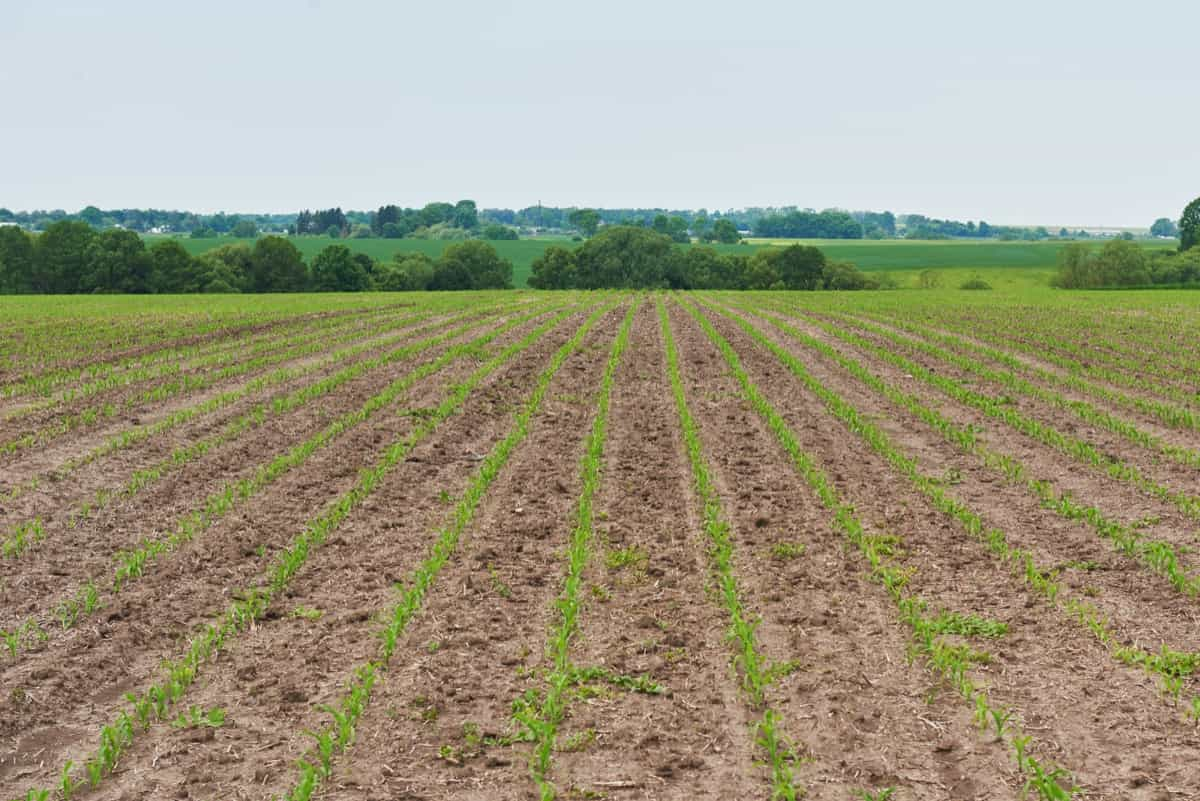
Monitoring weed growth and species identification is essential to developing the right management plan. Cultural practices, such as timely cultivation in weed control. Keeping non-cropped areas weed-free and cleaning equipment helps prevent weed spread. No-till or reduced tillage methods can also help minimize weed germination. Utilizing post-emergence herbicides for emerging weeds completes the integrated approach to effective weed management in corn farming.
Pre-emergence Herbicides for Corn Weed Control
Pre-emergence herbicides are essential for weed management in corn farming, acting before crop emergence. Field selection and seedbed preparation are crucial before planting. A robust 30-inch row spacing variety helps corn compete with weeds while maintaining a plant population of 30,000 to 34,000 per acre, further curbs weed growth. Rainfall or pre-plant irrigation aids weed seed germination, enabling control via cultivation or post-emergence herbicides like glyphosate, paraquat, and carfentrazone.
Common pre-emergent herbicides include EPTC, alachlor, or metolachlor, which can be broadcast pre-bedding and incorporated by disking or banding on formed beds. To optimize results, pre-irrigate, incorporate manures before herbicide, adjust incorporation depth, cross-disk beds, time incorporation per label, manage perennials pre-planting, disturb nutsedge beforehand, plant immediately after herbicide, and time first irrigation strategically for herbicide activity.
Post-emergence Herbicides for Corn Weed Control
Post-emergence herbicides play a crucial role in weed management for corn after planting. Cultivation using rolling cultivators or sweeps effectively reduces weeds between rows, but those within the crop rows may persist. Corn plants with roots extending into the furrow (above 8 inches) are more sensitive to root pruning, with rolling cultivators causing lesser damage than sweeps or knives.
Maintaining a 4-inch distance from corn and throwing soil to the plant can minimize root pruning, avoiding harm to tender stalks. Postemergent herbicides target weeds not controlled by cultivation, being most effective on seedlings. Some products or tank mixes require a directed spray on corn taller than 8 to 12 inches to prevent herbicide contact with the whorl and reduce the risk of corn injury.
In case you missed it: How to Start Corn/Maize Farming in Mexico: A Step-by-Step Production Guide
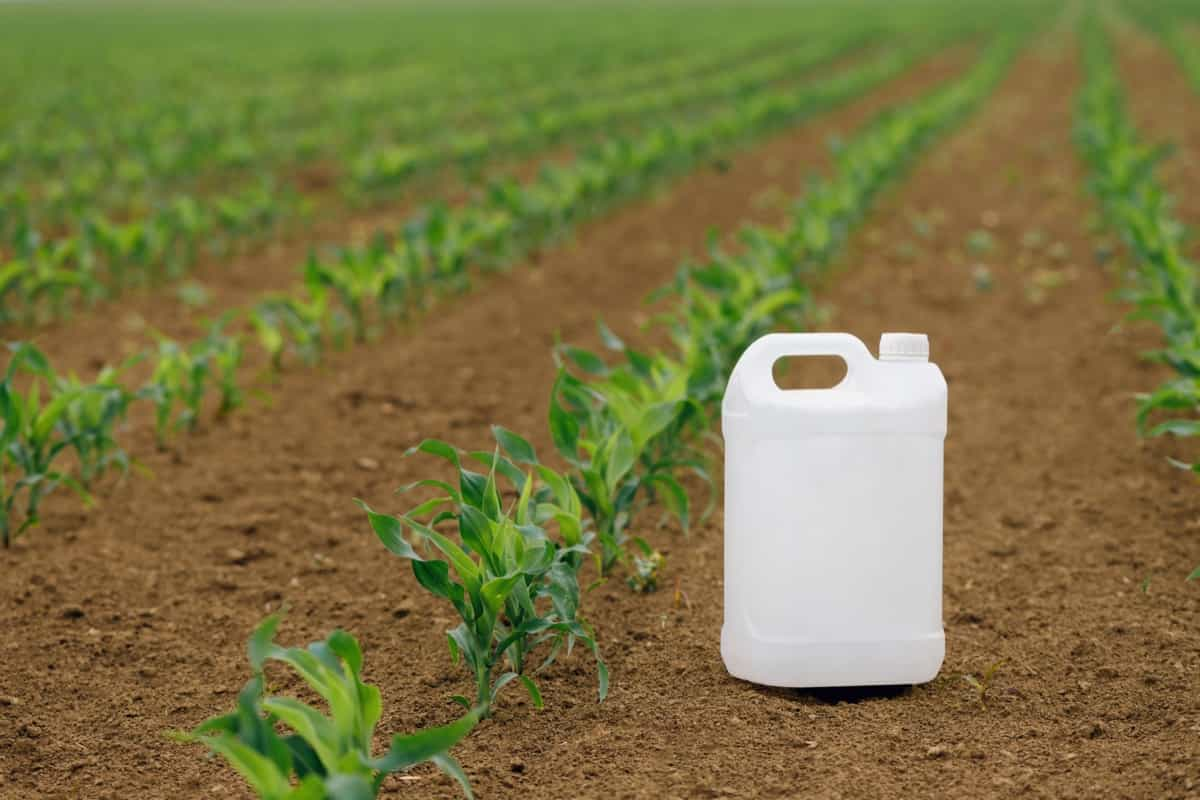
Commonly used post-emergence herbicides for corn include 2,4-D, bromoxynil (Buctril), carfentrazone (Shark), dicamba (Banvel, Clarity), dicamba/halosulfuron (Yukon), diflufenzopyr (Distinct), halosulfuron (Sandea), metribuzin (Sencor), nicosulfuron (Accent), and foramsulfuron (Option). It is crucial to adhere closely to label application guidelines to avoid any phytotoxicity to the crop, especially with carfentrazone (Shark).
Selective Herbicides for Broadleaf Weed Control in Corn
Selective herbicides for broadleaf weed control in corn are designed to target and eliminate specific broadleaf weed species while sparing the corn crop. These herbicides disrupt key physiological processes unique to broadleaf plants, ensuring effective weed control without harming corn plants. One commonly used selective herbicide for broadleaf weed control in corn is 2,4-D (2,4-dichlorophenoxyacetic acid). It is effective against many broadleaf weeds such as lambs, quarters, pigweeds, and marestail.
Another popular option is dicamba (3,6-dichloro-2-methoxybenzoic acid), known for its efficacy against weeds like water hemp, velvetleaf, and morning glory. Atrazine is a selective herbicide that controls both broadleaf and grassy weeds in corn. It offers excellent control against weeds like foxtail, pigweed, and velvetleaf. Furthermore, mesotrione (Callisto) is effective against weeds such as common ragweed and lambs quarters, providing an essential tool for corn growers to manage these troublesome species.
Non-selective Herbicides for Grassy Weed Control in Corn
Non-selective herbicides control grassy weeds in corn fields. Glyphosate is one of the most widely used non-selective herbicides in corn farming. It effectively targets a range of grassy and broadleaf weeds, providing efficient control. Glyphosate inhibits an enzyme essential for plant growth, causing weed death. Farmers use glyphosate as a pre-plant, pre-emergence, or post-emergence application.
Another widely used non-selective herbicide is paraquat. It acts rapidly on contact, effectively controlling grassy weeds. Paraquat is applied post-emergence and disrupts cell membranes in weeds, leading to rapid desiccation and death. It is essential to apply paraquat as it causes skin irritation and health hazards if mishandled. Both glyphosate and paraquat are essential for grassy weed management in corn fields.
Cultural Practices for Weed Suppression in Corn Fields
- Crop Rotation: Rotating corn with non-host crops disrupts weed life cycles, reducing weed pressure over time.
- High Plant Density: Planting corn at higher densities helps create a dense canopy, shading out emerging weeds.
- Timely Planting: Early planting enables corn to compete against weeds.
- Proper Seedbed Preparation: A well-prepared seedbed promotes uniform crop emergence and growth, minimizing weed establishment.
- Mulching: Organic mulches like straw or compost can smother weeds and improve soil moisture retention.
- Precision Planting: Ensuring precise plant spacing optimizes canopy development, making it harder for weeds to compete.
- Mechanical Cultivation: Timely cultivation with proper equipment can control weeds between rows.
- Use of Cover Crops: Cover crops can suppress weeds during fallow periods, preventing weed seed germination.
- Hand Weeding: Hand weeding can effectively control weeds in small-scale or organic systems.
In case you missed it: Pest and Disease Management in Maize: Causes, Symptoms, Chemical and Biological Control

Mulching as a Weed Management Technique in Corn Farming
Mulching is a highly effective weed management technique in corn farming. Applying organic mulch, such as straw or compost, over the soil surface suppresses weed growth and competition with corn plants. The mulch creates a barrier, preventing weed seeds from germinating and sunlight from reaching existing weeds. Additionally, mulch retains soil moisture, promoting healthier corn growth. This method reduces the need for herbicides and cultivation, leading to cost savings and environmental benefits. Mulching improves soil structure, enhances nutrient retention, and minimizes soil erosion.
Mechanical Weed Control Methods in Corn Farming
- Tillage: Using mechanical tools like plows or cultivators to disturb the soil and uproot weeds.
- Mowing: Cutting down weeds to prevent seed production and hinder their growth.
- Flame Weeding: Applying controlled flames to target weeds, damaging their cellular structure.
- Cultivation: Using specialized equipment to remove weeds between crop rows.
- Hand Weeding: Manual removal of weeds, particularly in small-scale or organic farming.
- Roller/Crimper: Rolling a heavy roller over cover crops to suppress weed growth.
Cover Crops for Weed Suppression in Corn Fields
Cover crops are valuable tools for weed suppression in corn fields, as they create a living mulch that competes with and shades out weeds. They can also improve soil health, nutrient cycling, and water retention. Leguminous cover crops like clover and hairy vetch add nitrogen to the soil, benefitting corn growth.
Examples of cover crops used for weed suppression in corn fields include winter rye, crimson clover, annual ryegrass, and buckwheat. These cover crops effectively suppress weeds by outcompeting them for resources and preventing weed seed germination. Proper management of cover crops and timely harvest before planting corn is essential to avoid competition with the main crop.
Crop Rotation for Weed Management in Corn Farming
By alternating corn with different crops each season, weed populations are disrupted, reducing their ability to establish and spread. The diversity created in the cropping system also makes it harder for weeds to adapt and become resistant to control methods. Legume crops, like soybeans, can help fix nitrogen in the soil, benefiting subsequent corn crops. Small grains such as wheat or barley can also provide a physical barrier to weed growth.
Herbicide-resistant Weeds in Corn Farming
In corn farming, herbicide-resistant weeds have become a significant challenge. Due to the widespread adoption of herbicide-resistant corn hybrids, such as glyphosate-resistant varieties, certain weeds have evolved to withstand these herbicides. Over-reliance on a single type of herbicide has led to the emergence of resistant weed biotypes.
Examples of herbicide-resistant weeds in corn farming include glyphosate-resistant pigweed, water hemp, and horseweed (marestail). These tough weeds can no longer be effectively controlled by glyphosate alone, impacting crop yields and profitability. Farmers must adopt integrated weed management strategies to combat herbicide-resistant weeds, combining cultural practices, rotation, and judicious herbicide use.
In case you missed it: How to Make Corn Silage: Production and Management Steps for Goats, Sheep, Cows, Pigs, and Cattle
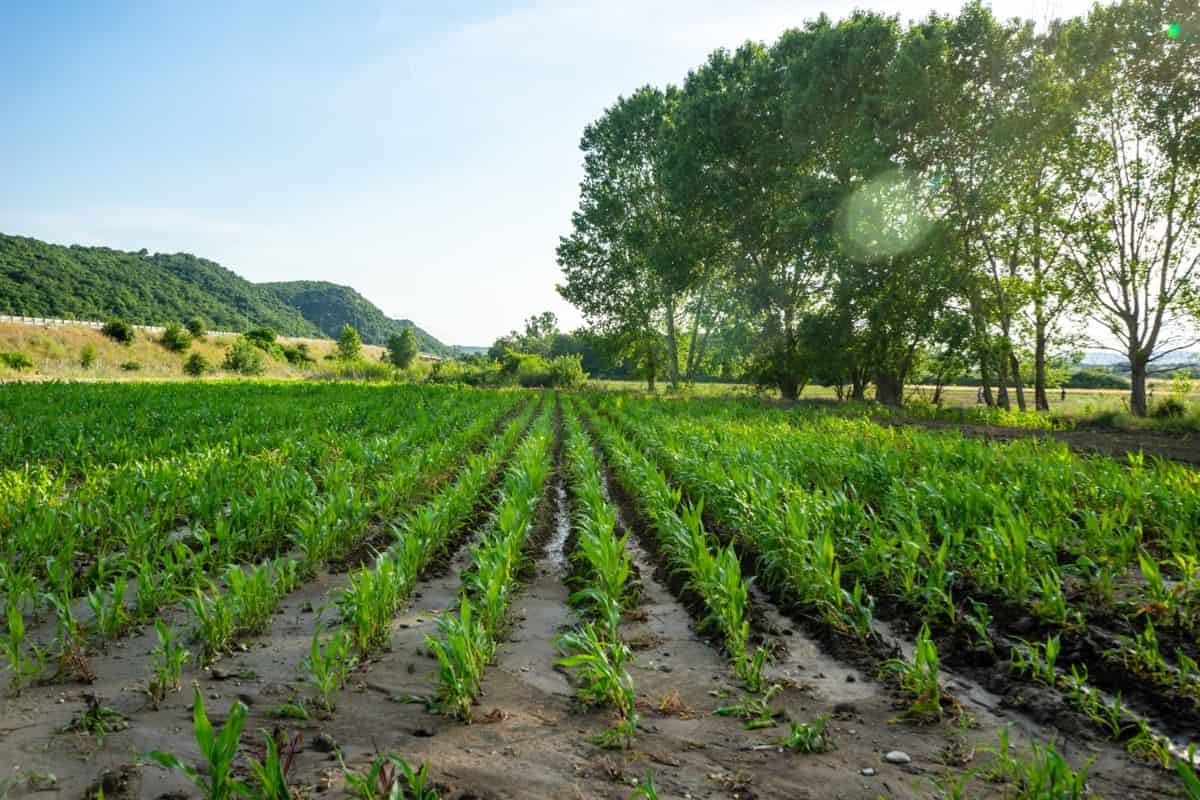
Weed Scouting and Monitoring in Corn Fields
Regularly inspecting the fields helps identify weed species, assess their density, and understand growth stages. Farmers can intervene promptly to prevent weed competition and reduce potential yield losses by staying vigilant. Weed scouting should begin before planting, during early crop growth, and continue throughout the season. Techniques such as visual surveys, GPS mapping, and remote sensing can aid in precise and comprehensive monitoring. Early detection of herbicide-resistant weeds can guide proper herbicide selection and prevent their spread.
Organic Weed Management Practices in Corn Farming
- Mulching: Apply organic mulches like straw or cover crops to hinder weed growth, conserve moisture, and enhance soil health.
- Crop Rotation: Rotate corn with diverse crops to disrupt weed life cycles and decrease their prevalence.
- Cover Crops: Plant cover crops during fallow periods to outcompete weeds and prevent their establishment.
- Weed-Free Seedbed: Prepare a clean seedbed to minimize weed competition during corn’s early growth.
- Mechanical Control: Utilize hand weeding, hoeing, or cultivation to remove weeds physically.
- Flame Weeding: Controlled flaming of weeds can be effective, especially for hard-to-control species.
- Allelopathic Plants: Intercrop with allelopathic plants that release natural chemicals inhibiting weed growth.
- Biological Control: Encourage beneficial insects and organisms that prey on weeds.
Chemical-free Weed Control Methods in Corn Farming
Organic mulches, hand weeding, crop rotation, precision planting, and mechanical cultivation effectively control weeds in organic systems. Hand weeding is effective in small-scale or organic systems, while crop rotation disrupts weed life cycles. Proper plant spacing creates a dense canopy, while mechanical cultivation controls weeds between rows.
Weed Competition and Its Impact on Corn Yield
Weed competition can significantly impact corn yield. According to studies, weeds compete with corn for essential resources like light, water, and nutrients during the critical early growth stages. This competition can reduce corn yield potential by up to 50%. Weeds that emerge within the first few weeks of corn planting have the most detrimental effect on yield. Effective weed management practices, such as timely cultivation, herbicide application, and crop rotation, minimize weed competition and maximize corn yield potential.
In case you missed it: Best Fertilizer for Maize: Organic, NPK, Compost Manure, and Schedule
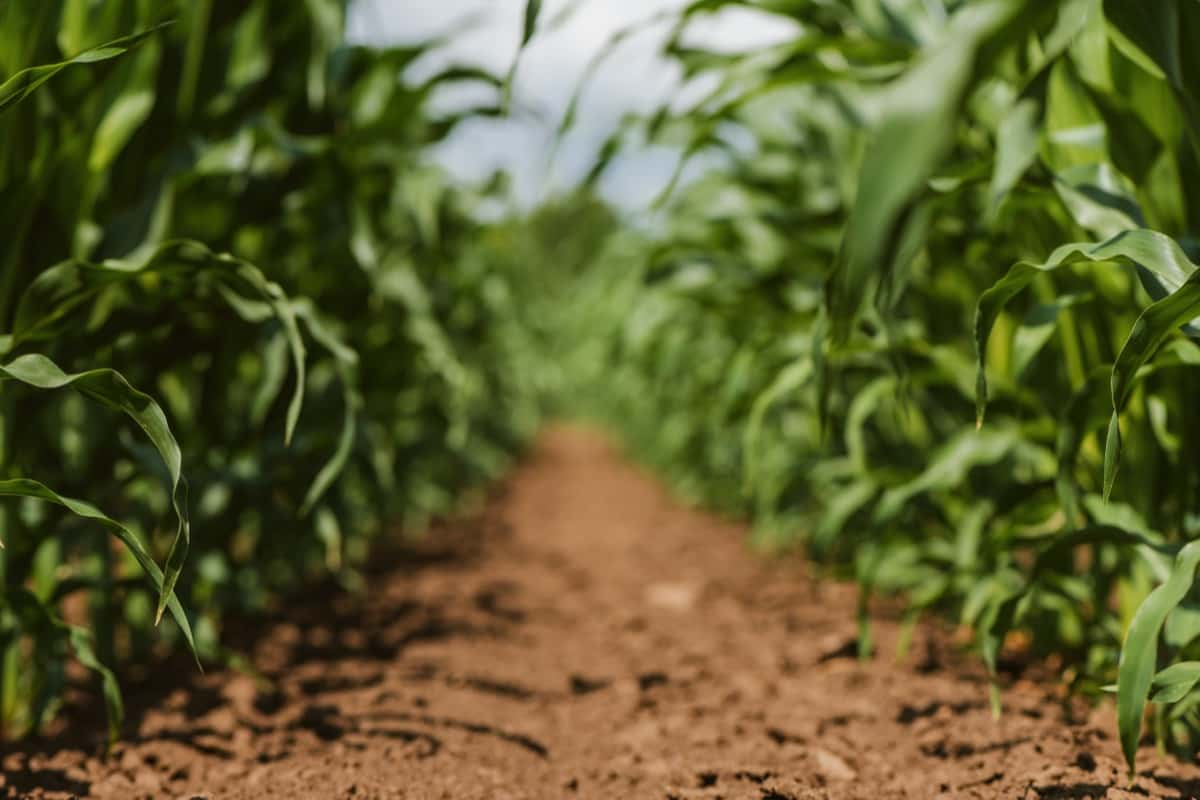
Conclusion
Effective weed management is vital for successful corn farming. Implementing a diverse approach, including cultural practices, timely herbicide application, and crop rotation, helps minimize weed competition and maximize corn yield potential, ensuring sustainable and profitable corn production.
- Types of Pesticides Used in Agriculture: A Beginner’s Guide
- Economical Aquaculture: A Guide to Low-Budget Fish Farming
- 15 Common Planting Errors That Can Doom Your Fruit Trees
- How to Make Houseplants Bushy: Effective Tips and Ideas
- Innovative Strategies for Boosting Coconut Pollination and Yield
- Pollination Strategies for Maximum Pumpkin Yield
- The Complete Guide to Chicken Fattening: Strategies for Maximum Growth
- Natural Solutions for Tulip Problems: 100% Effective Remedies for Leaf and Bulb-Related Issues
- Revolutionizing Citrus Preservation: Towards a Healthier, Greener Future
- Natural Solutions for Peony Leaf and Flower Problems: 100% Effective Remedies
- Maximizing Profits with Avocado Contract Farming in India: A Comprehensive Guide
- Natural Solutions for Hydrangea Problems: 100% Effective Remedies for Leaf and Flowers
- The Ultimate Guide to Choosing the Perfect Foliage Friend: Bringing Life Indoors
- From Sunlight to Sustainability: 15 Ways to Use Solar Technology in Agriculture
- The Ultimate Guide to Dong Tao Chicken: Exploring from History to Raising
- The Eco-Friendly Makeover: How to Convert Your Unused Swimming Pool into a Fish Pond
- Mastering the Art of Delaware Chicken Farming: Essentials for Healthy Backyard Flocks
- 20 Best Homemade Fertilizers for Money Plant: DIY Recipes and Application Methods
- How to Craft a Comprehensive Free-Range Chicken Farming Business Plan
- Brighten Your Flock: Raising Easter Egger Chickens for Beauty and Bounty
- How to Optimize Your Poultry Egg Farm Business Plan with These Strategies
- Subsidy for Spirulina Cultivation: How Indian Government Schemes Encouraging Spirulina Farmers
- Ultimate Guide to Raising Dominique Chickens: Breeding, Feeding, Egg-Production, and Care
- Mastering the Art of Raising Jersey Giant Chickens: Care, Feeding, and More
- Ultimate Guide to Raising Legbar Chickens: Breeding, Farming Practices, Diet, Egg-Production
- How to Raise Welsummer Chickens: A Comprehensive Guide for Beginners
- How to Protect Indoor Plants in Winter: A Comprehensive Guide
- Ultimate Guide to Grow Bag Gardening: Tips, Tricks, and Planting Ideas for Urban Gardeners
- Guide to Lotus Cultivation: How to Propagate, Plant, Grow, Care, Cost, and Profit
- Agriculture Drone Subsidy Scheme: Government Kisan Subsidy, License, and How to Apply Online
- Ultimate Guide to Raising Araucana Chickens: Breed Profile, Farming Economics, Diet, and Care
- Bringing Hydroponics to Classroom: Importance, Benefits of Learning for School Students
- Ultimate Guide to Raising Polish Chickens: Breed Profile, Farming Economics, Diet, and Care
- Ultimate Guide to Raising Australorp Chickens: Profile, Farming Economics, Egg Production, Diet, and Care
- Silkie Chicken Farming: Raising Practices, Varieties, Egg Production, Diet, and Care
- Sussex Chicken Farming: Raising Practices, Varieties, Egg Production, Diet and Care